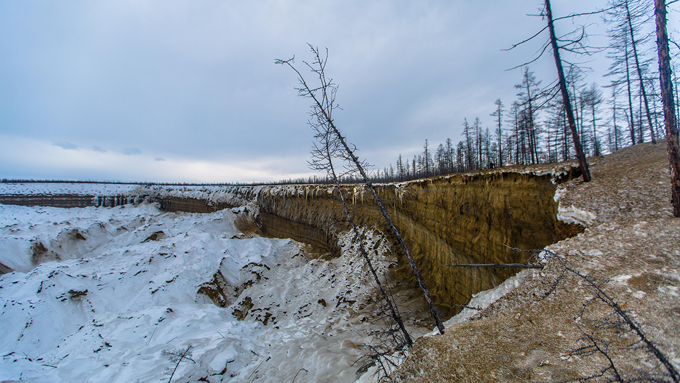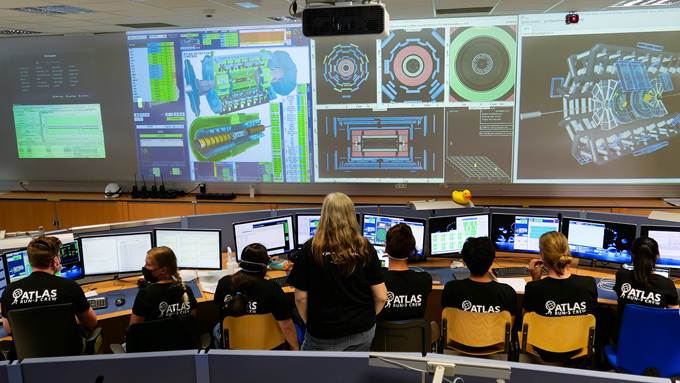This post was originally published on this site
Russia’s invasion of Ukraine in late February horrified the world. Images of civilians fleeing their homes, broken bodies strewn across city streets, smoldering apartment complexes and mass graves have permeated the news and social media platforms ever since. This war has killed tens of thousands of people and displaced 14 million more.
Wars aren’t fought in a vacuum. The ripple effects of the war in Ukraine, from skyrocketing energy and food costs to environmental damage and the threat of nuclear disaster (SN: 7/2/22, p. 6; SN Online: 3/7/22), have been felt around the globe — especially amid two other crises, the ongoing coronavirus pandemic and climate change.
“A convergence of all these crises at the same time is very, very dangerous for the world,” Tedros Adhanom Ghebreyesus, director-general of the World Health Organization, said in May.
We often look to science for solutions to the world’s problems. But this tectonic shift in the geopolitical landscape has upended global science collaboration, leaving many researchers scrambling to find solid footing. While the outcome of this change — like the outcome of the war itself — is uncertain, here are some examples of how the conflict has affected scientists and their research.
Science in a war zone
Ukraine’s infrastructure has sustained massive damage since the invasion began. Hospitals, universities and research institutions have not been spared.
Some scientists have sought refuge in other countries while roughly half remain in Ukraine, with male researchers between the ages of 18 and 60 expected to serve in the military, says George Gamota, a U.S.-based physicist who advises the National Academy of Sciences of Ukraine. Gamota was born in Ukraine and moved to the United States as a child. He maintains close ties with his country of birth. When Ukraine became an independent country in 1991 after the fall of the Soviet Union, he helped advise Ukraine as it built its scientific infrastructure.
“When Russia attacked Ukraine, all hell broke loose. This situation really has not stabilized,” Gamota says.
Research funding in Ukraine has declined by 50 percent, he says. Scientific bodies across the globe have stepped up to offer aid through grants, job opportunities and resettlement programs. But monetary support, whether it’s from Ukraine’s government or independent organizations, still takes too long to reach scientists’ pockets, Gamota says. “Some are not getting anything.”
The National Academy of Sciences of Ukraine is already looking ahead to how to rebuild. In September, the organization met with its counterparts in Europe and the United States. Latvia, Poland and other places described how they restructured after the end of the Soviet Union, Gamota says. “It was an exercise that I think is important to have. But probably what the Ukrainians were looking for is how can the world help us right now.”
In March, the Breakthrough Prize Foundation donated $1 million to directly support Ukrainian researchers. The organization donated an additional $2 million in October for rebuilding efforts, a move that Gamota calls “fantastic.”
Slowdowns for physics and space
While science in Ukraine has struggled as the war drags on, Russian science has become more and more isolated. Sanctions from Western countries have directly and indirectly targeted Russia’s scientific enterprise.
In June, the White House Office of Science and Technology Policy announced that the United States will “wind down” collaborations with Russia, following an earlier ban on exports of U.S. technology there. The policy applies to national labs, as well as projects that receive federal funding and involve Russian government–affiliated universities and research institutions. Many research organizations in the West have also cut ties with collaborators in Russia.
These steps have particularly affected some large-scale collaborations in space and physics research.
There have been mission delays and the temporary shutdown of at least one space telescope (SN: 3/26/22, p. 6). The International Space Station, which is run jointly by NASA and the Russian space agency Roscosmos, however, continues to operate normally for now.
In the world of high-energy physics research, the CERN particle physics lab near Geneva announced that it will not be renewing its international cooperation agreements with Russia and Belarus, which is aiding Russia’s invasion, when the contracts expire in 2024.
When that happens, the roughly 8 percent of CERN staff affiliated with Russian institutions, equaling about 1,000 researchers, will be unable to use CERN facilities. And Russia will stop contributing resources to experiments.
These measures strongly condemn the invasion “while leaving the door ajar for continued scientific collaboration should conditions allow in the future,” CERN Director-General Fabiola Gianotti wrote in a memo to staff about the decision. Until 2024, Russian and Belarusian scientists can continue working on current collaborations, such as ATLAS — one of the detectors that spotted the Higgs boson in 2012 and is part of ongoing searches for theoretical particles, including dark matter (SN: 7/2/22, p. 18). But new efforts are prohibited.

Science outside of Ukraine and Russia has not escaped the geopolitical maelstrom’s economic fallout. Rising energy costs — spurred by Russia cutting off exports of natural gas — are causing European research labs to reassess their energy use, the journal Nature reported in October. CERN is a major consumer, using the equivalent of about a third of Geneva’s annual average energy consumption.
The lab ended the run of its largest accelerator on November 28, two weeks ahead of schedule, to decrease its load on the electrical grid and prepare for surging prices and potential winter shortages. CERN officials announced that the number of particle collisions in 2023 will decrease, tightening competition among researchers for accelerator time, Nature reported.
The war also has put pressure on an already faltering global supply chain, which has led to shortages and shipping delays. The delays have created snags in the construction of ITER, the world’s largest nuclear fusion experiment that’s slated to open in 2025, in France. “We have been through thick and thin with this project, and we will manage,” says ITER spokesperson Sabina Griffith. ITER had been expecting a ring magnet and other equipment from Russia, one of seven partners along with the European Union and the United States. Due to intergovernmental contracts, Russia is still part of the project. But for now, “everything is put on ice,” Griffith says.
A chilling effect on Arctic research
Northern Russia is home to about two-thirds of Earth’s frozen soil, or permafrost. Collectively, the world’s permafrost contains almost twice as much carbon as is in the atmosphere. With temperatures in the Arctic rising almost four times as fast as the global average, the region’s permafrost is thawing.
By the end of this century, the defrosted soil could exhale hundreds of billions of tons of carbon dioxide and methane, according to some estimates (SN Online: 9/25/19). To better understand how climate change is reshaping the Arctic and vice versa, researchers need detailed measurements of permafrost carbon, temperature, microbial communities and more.
But the deteriorating relationship between the West and Russia is “throwing a major wrench into bringing the data together so that we can get the clearest picture of the Arctic as a whole,” says Ted Schuur, an ecologist at Northern Arizona University in Flagstaff and the principal investigator of the Permafrost Carbon Network. Now that much of the Arctic’s permafrost is inaccessible, Schuur and colleagues are looking for sites in North America and Europe that could serve as a proxy for Russian permafrost, he says.
Terminated collaborations, “while intended to ‘punish’ Russia, are realistically affecting the global Arctic community by limiting the researchers’ access to scientific information and undermining the resilience of Arctic (including notably Indigenous) communities,” Nikolay Korchunov, Russia’s ambassador-at-large for Arctic affairs, wrote in an e-mail to Science News.

Korchunov chairs the Arctic Council, an eight-member intergovernmental body that acts as a steward for the region, forging agreements on oil spill cleanup, commerce, wildlife conservation, climate change research and more. In March, the council’s other seven member nations — Canada, Denmark, Iceland, Finland, Sweden, Norway and the United States — announced they would pause collaboration with Russia.
Work among the so-called “Arctic 7” continues. But the freeze-out has derailed Russia’s planned biodiversity– and pollution-monitoring projects, Korchunov says. “A cold scientific environment only increases uncertainty and risks of an ineffective response to the warming Arctic.”
But some cooperation in the Arctic has continued, for now. Vladimir Romanovsky is a geophysicist at the University of Alaska Fairbanks who studies permafrost temperature and relies on data provided by scientists in Russia. This year, his team got results, but whether his Russian collaborators will be able to take measurements in 2023 is unclear, Romanovsky says. “It is changing so quick, so fast that we don’t know what the situation will be by then.”
Most of the researchers in Russia that Romanovsky knows are struggling with funding. At the moment, there is enough money to keep his collaborators employed but not enough to do fieldwork. Cutting off Russian scientists from communication and data sharing is a “big, big problem,” Romanovsky says. They now are almost completely excluded from international meetings and collaborations, he notes.
In the long term, Romanovsky thinks that Russian science could lose many young researchers, like what happened in the 1990s when the Soviet Union collapsed. “They just went to go somewhere else,” he says, leaving to find work in other fields to continue to support their families. He and many others hope it won’t happen again.
